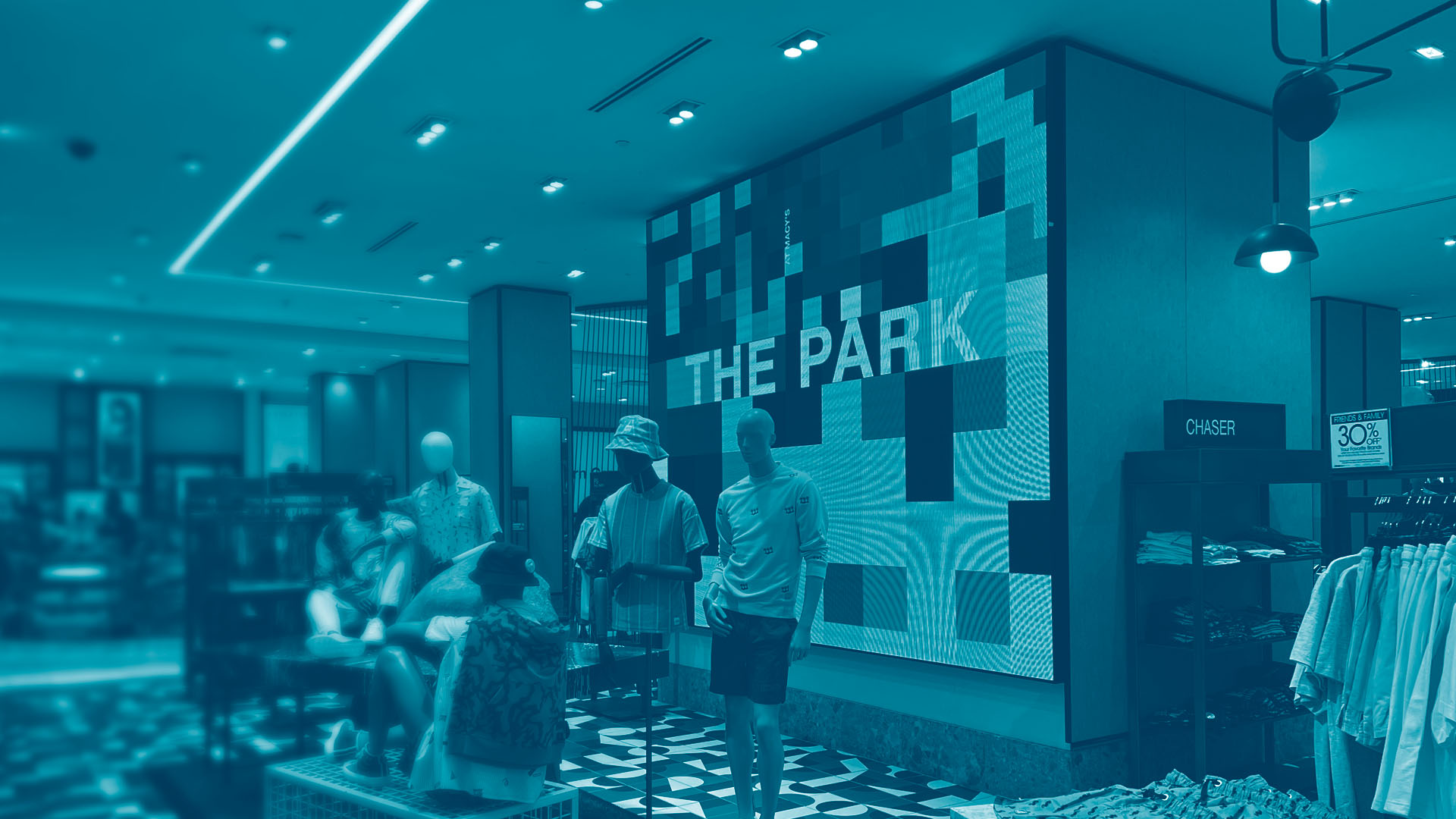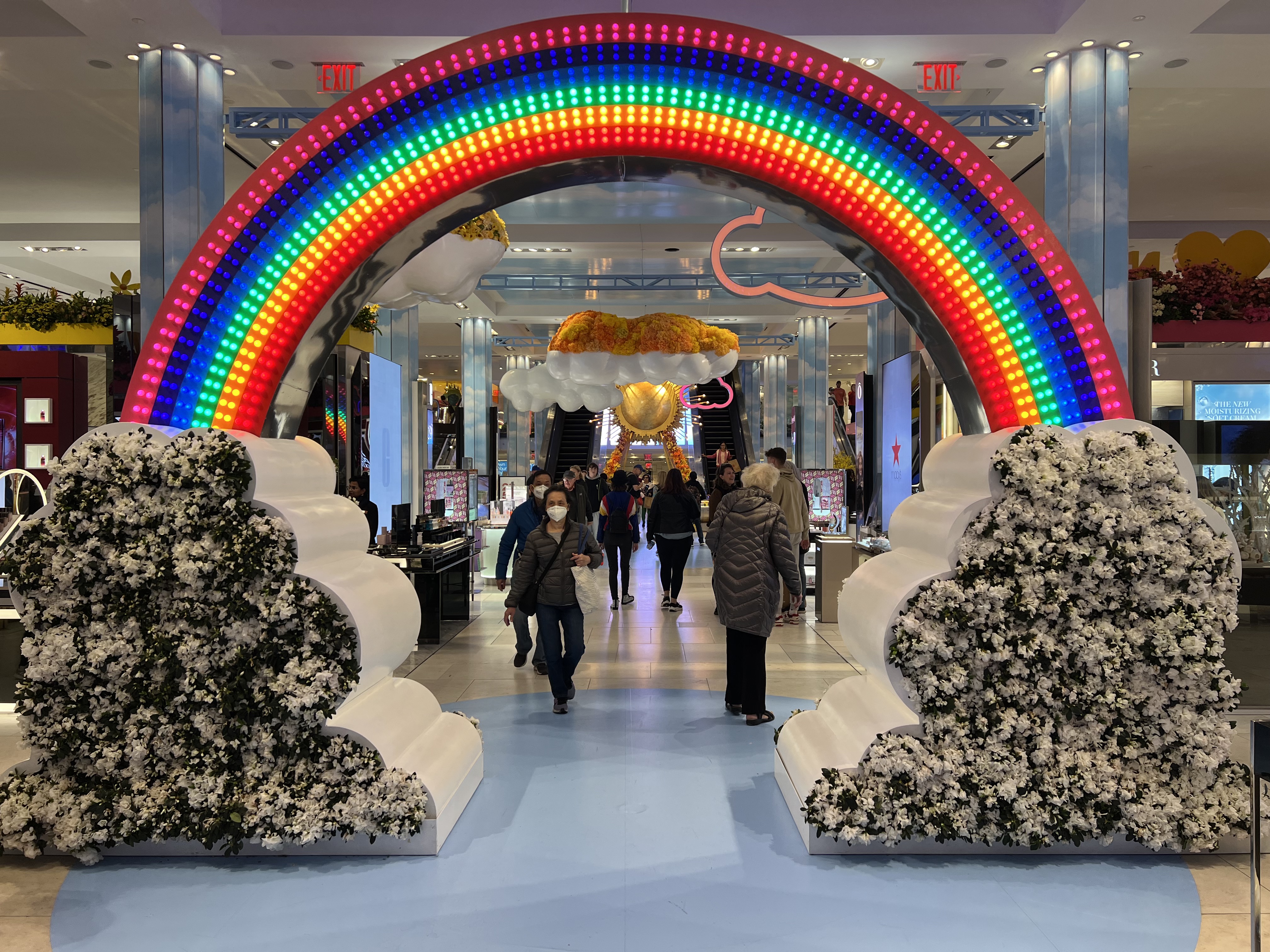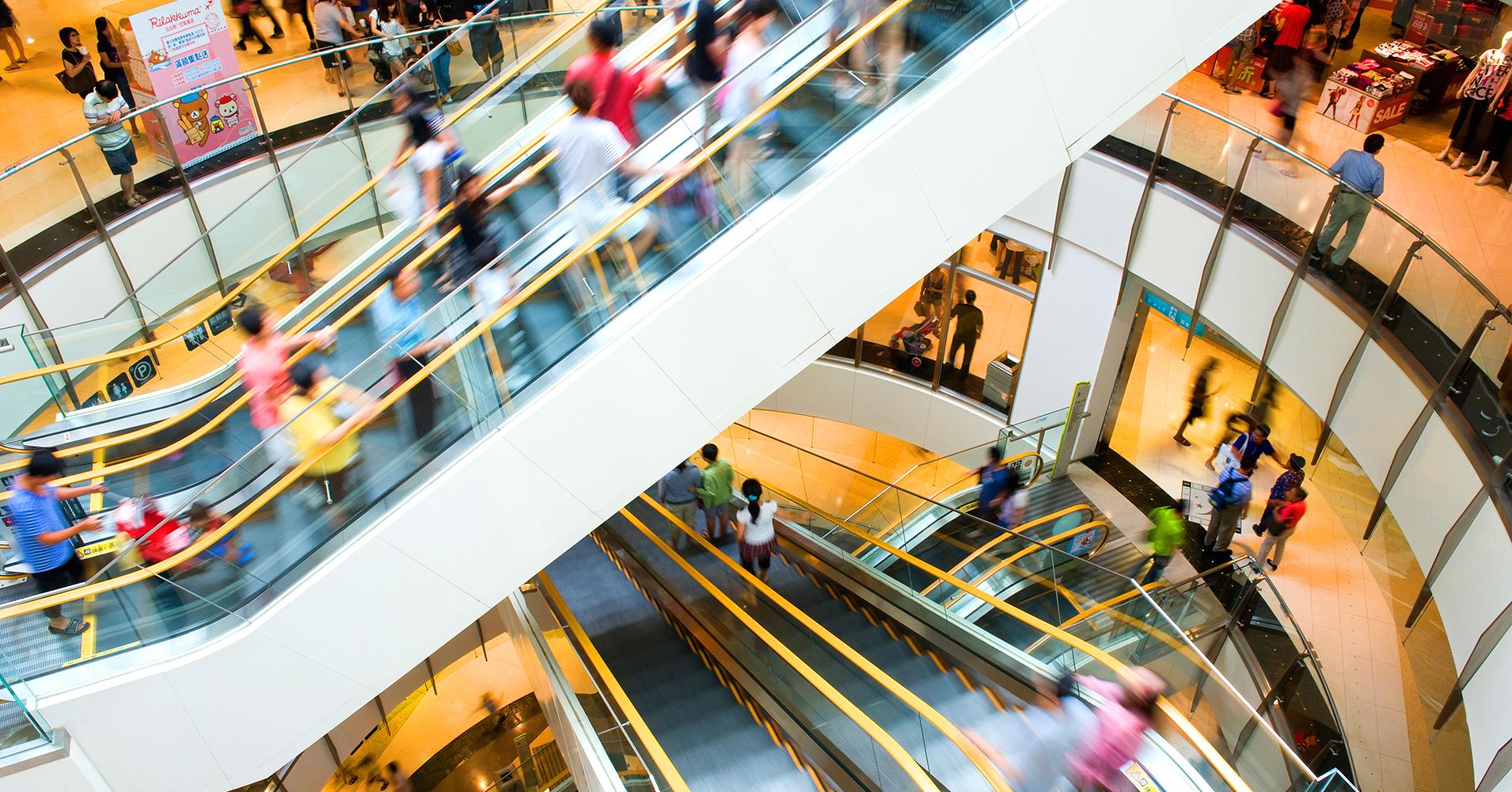Crafting Elegance with a Purpose: The Role of Digital Signage in Luxury Retail
The world of luxury advertising has undergone a remarkable evolution over the past half-century. From glossy print advertisements and opulent window displays to exclusive in-store events and runway extravaganzas, luxury brands have mastered the art of captivating audiences with their unparalleled approach to brand exclusivity, scarcity and customer service. Brands meticulously curated their image, crafting an aura of exclusivity that resonated with a select clientele. Runway shows and extravagant events, often attended by A-list celebrities, were the pinnacle of luxury brand experiences. Recent shifts in the consumer market brought on by the pandemic as well as technological advancements have ushered in a new era, compelling luxury brands to explore innovative avenues to engage and enchant consumers, through new digital and digital-signage-based experiences.
Today, in addition to curating these high-end physical experiences, luxury brands are now embracing digital transformation, in-store and online, as part of their approach to their increasingly dynamic audiences.
Expanding without sacrificing essentials: the challenge for Luxury
The COVID-19 pandemic disrupted the status quo, bringing into sharp relief the need for advertisers across industries to connect in new ways with consumers in an increasingly digital world (the tides had already been pushing things in this direction due to the advent of social media and its innate accessibility and emphasis on personalization). With lockdowns limiting physical interactions, the importance of establishing a robust online presence became tantamount. Digital commerce saw unprecedented growth, opening opportunities for luxury brands to cater to a broader audience. Now, luxury brands are rising to the unique challenge presented by these times: how to create immersive, bespoke experiences that align with their brand's ethos in an omnichannel world.
What defines a luxury brand?
For luxury brands, customer service has always been paramount. In an era where consumer expectations are shaped by seamless online transactions and personalized experiences, excellence in customer service is not just a choice, it's a necessity. Brands that excel in both in-person and online interactions create a holistic journey for their clientele, reinforcing the values and ethos that luxury brands symbolize.
Luxury brands have always embodied lifestyle values that resonate with their target audience. Whether it's heritage, exclusivity, sustainability, or innovation, luxury brands convey a set of values that go beyond the product itself. In a digital age, these values remain central, and luxury brands must convey them effectively through digital signage and clienteling strategies to maintain their allure.
How do luxury brands incorporate digital signage into their in-store strategies?
Several luxury brands have seamlessly integrated digital signage into their stores to elevate the customer experience and attract more modern audiences to the brand. Louis Vuitton, for instance, introduced interactive window displays that allow passersby to explore its iconic trunks virtually. The luxury fashion house Gucci leveraged augmented reality mirrors in its stores, enabling customers to try on virtual outfits. Prada takes a unique approach by transforming its in-store signage into an immersive gallery experience: digital screens showcase art collaborations and runway shows, creating an ambiance that goes beyond product display, emphasizing the brand's commitment to art and culture. Additionally, Hermès has used digital screens to display exquisite craftsmanship videos, providing an intimate look at the meticulous process of creating their iconic silk scarves and leather goods.
Large-format LED canvasses and innovative lighting solutions have also become transformative tools in the creation of immersive, dynamic, and emotionally resonant spaces. Take Chanel's iconic flagship store on Fifth Avenue, for instance. Its intricate and ornate architecture, combined with a stunning 2,000-square-foot LED video wall, showcases fashion shows and artistic content, creating a captivating blend of heritage and innovation. Louis Vuitton's store in Singapore features a mesmerizing glass façade that transitions from transparent to opaque, thanks to digitally controlled liquid crystal technology, offering a dynamic and interactive display. Tiffany's flagship store on Champs-Élysées in Paris uses digital projections to transform its window displays into animated works of art, seamlessly blending classic elegance with contemporary creativity. In these luxury spaces, digital signage harmoniously complements architectural elements, making the digital world an integral part of the organic elevation of the environment, captivating visitors and redefining the shopping experience.
Luxury brands have also focused on using digital signage to amplify their clienteling strategies. Clienteling in digital signage elevates the shopping experience for luxury customers by offering a highly personalized and immersive journey. Some luxury stores employ custom apps that seamlessly integrate with digital signage, allowing users to tap through meticulously curated item collections. These apps go beyond mere product display; they suggest outfit combinations that align with individual preferences. For instance, if a customer shows interest in a blue blazer, the app can suggest various pairing options, be it with jeans, khakis, or a skirt. These tools seamlessly connect with luxury collections and broader store-wide and brand-wide digital initiatives, enabling each customer to receive tailored recommendations and visuals that resonate on a singular level. This level of personalization enhances the customer's sense of exclusivity and satisfaction, making the luxury shopping experience truly exceptional and, it extends the value and role of the Sales Associate in delivering meaningful service moments where it matters most: the fitting room.
Omnichannel luxury: the art of translating luxury brands online
The pandemic undeniably accelerated the adoption of e-commerce channels and made luxury brands more accessible to a broader audience. Luxury brands are now catering to two distinct customer segments, each with differing expectations. On one hand, there is the broader online audience, seeking the convenience and accessibility that e-commerce offers, but often with less emphasis on the traditional exclusivity associated with luxury brands. On the other hand, there are the inner-circle loyalists who have long cherished the highly sophisticated in-store experience and the aura of exclusivity. To bridge this gap, luxury brands have pivoted by expanding their online presence while carefully curating their digital platforms to maintain their brand's essence.
By deploying a mixture of digital signage, personalized clienteling apps, and immersive online experiences, brands are able to deliver a taste of luxury to a wider audience while preserving the lifestyle values and high-touch service that loyalists expect in-store. This delicate balance allows luxury brands to engage with both segments effectively, extending their reach without compromising their core identity.
Making every experience extraordinary
The evolution of luxury advertising over the past five decades has witnessed a remarkable transformation in the way luxury brands connect with their audiences. This shift towards omnichannel engagement has become more evident as brands explore innovative avenues to communicate their values, lifestyles, and distinctive experiences to their diverse customer pools. Digital signage has emerged as a powerful tool in this journey, enabling luxury brands to captivate, engage, and enchant their audiences both online and in-store.
The essence of luxury is not just about the product; it's about the values, lifestyle, and experiences that luxury brands embody. Through digital signage and a seamless fusion of in-person and online interactions, luxury brands are poised to continue captivating their discerning clientele, crafting experiences that are truly "out of the ordinary” and ensuring their legacy endures in the age of omnichannel.
Share this
You May Also Like
These Related Stories

How Retail Media Networks Strengthen In-Store Messaging

Retail Redefined: 2024 predictions that may shape the digital and design experience of brick & mortar


